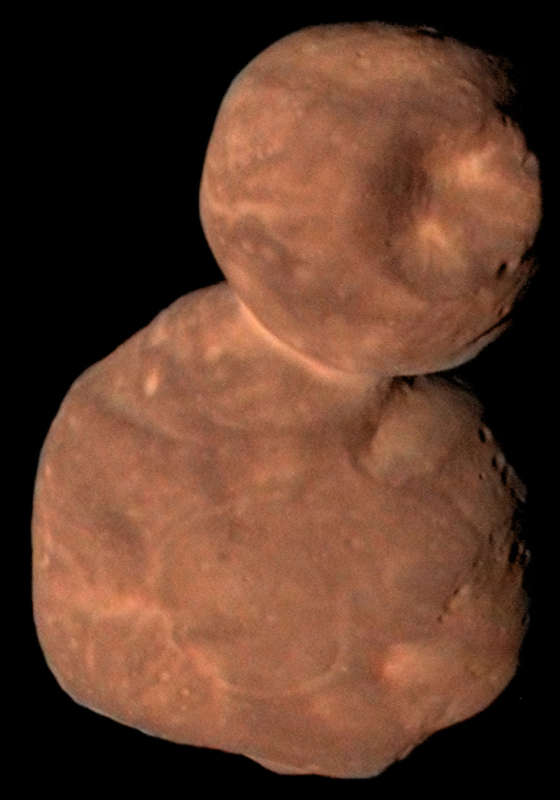Credit & Copyright: NASA,
Johns Hopkins University APL,
Southwest Research Institute,
Roman Tkachenko
Explanation:
Primordial contact binary 2014 MU69,
also known as Ultima Thule, really is very red.
In fact, it's the reddest outer solar system object ever visited by a
spacecraft from Earth.
Its reddish hue is believed to be due to organic materials
on its surface.
Ruddy color and tantalizing surface details seen in this composite image
are based on data from the
New Horizons spacecraft recorded during the January 1 flyby of
the farthest world yet
explored.
Embedded in the smaller lobe Thule (top), the 8 kilometer wide
feature nick named Maryland crater is the largest
depression known on the surface of Ultima Thule.
Transmission of data collected from the flyby continues,
and will go on until the late summer 2020
as New Horizons speeds deeper into the
dim and distant Kuiper Belt.
1999 2000 2001 2002 2003 2004 2005 2006 2007 2008 2009 2010 2011 2012 2013 2014 2015 2016 2017 2018 2019 2020 2021 2022 2023 2024 2025 |
Yanvar' Fevral' Mart Aprel' Mai Iyun' Iyul' Avgust Sentyabr' Oktyabr' Noyabr' Dekabr' |
NASA Web Site Statements, Warnings, and Disclaimers
NASA Official: Jay Norris. Specific rights apply.
A service of: LHEA at NASA / GSFC
& Michigan Tech. U.
|
Publikacii s klyuchevymi slovami:
asteroid - asteroidy - Poyas Koipera
Publikacii so slovami: asteroid - asteroidy - Poyas Koipera | |
Sm. takzhe:
Vse publikacii na tu zhe temu >> | |
